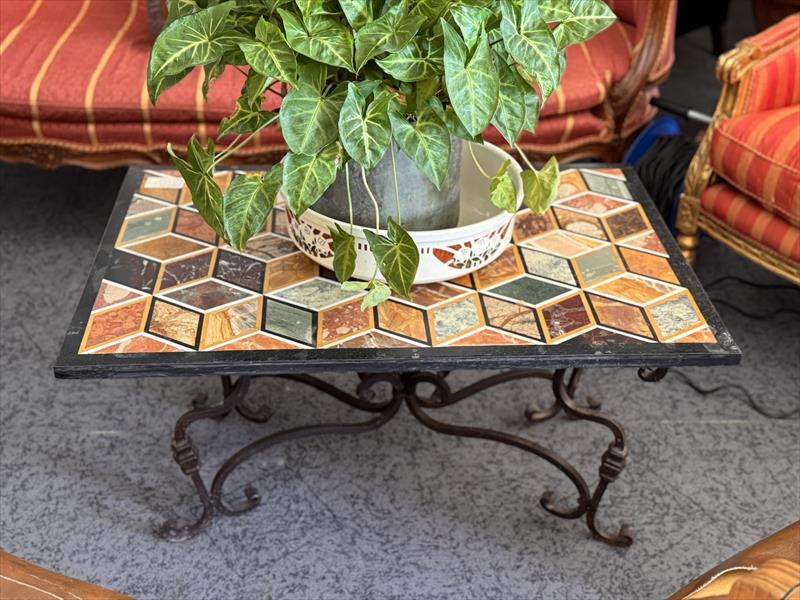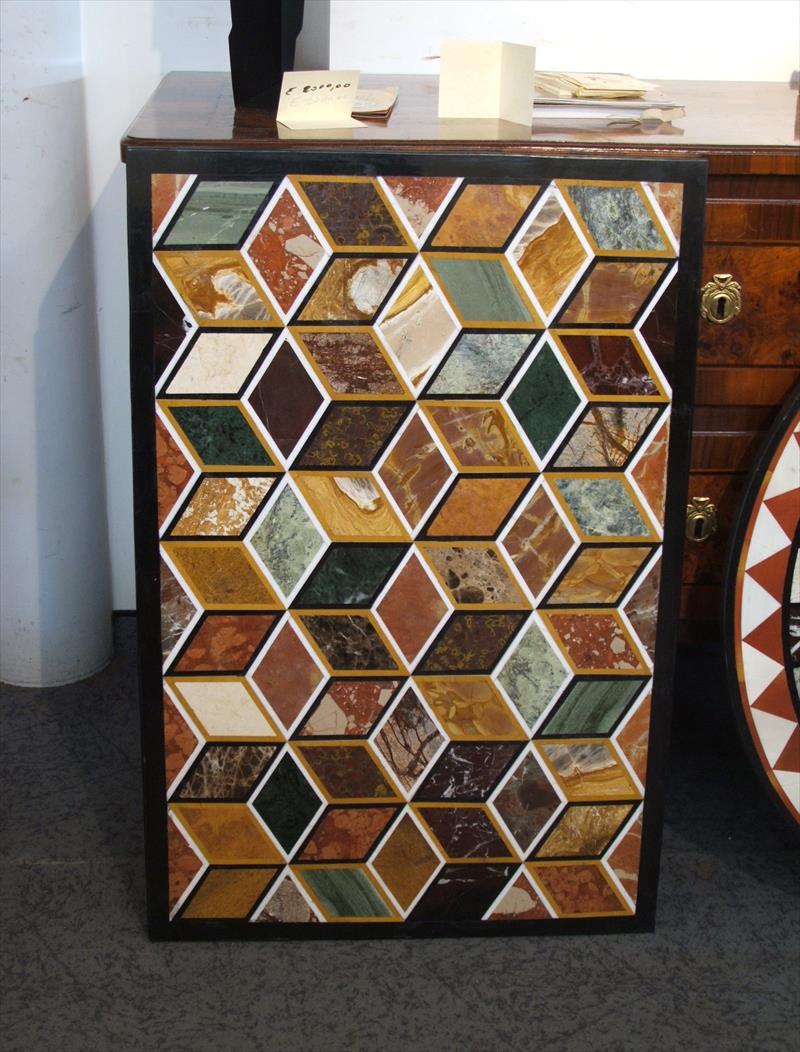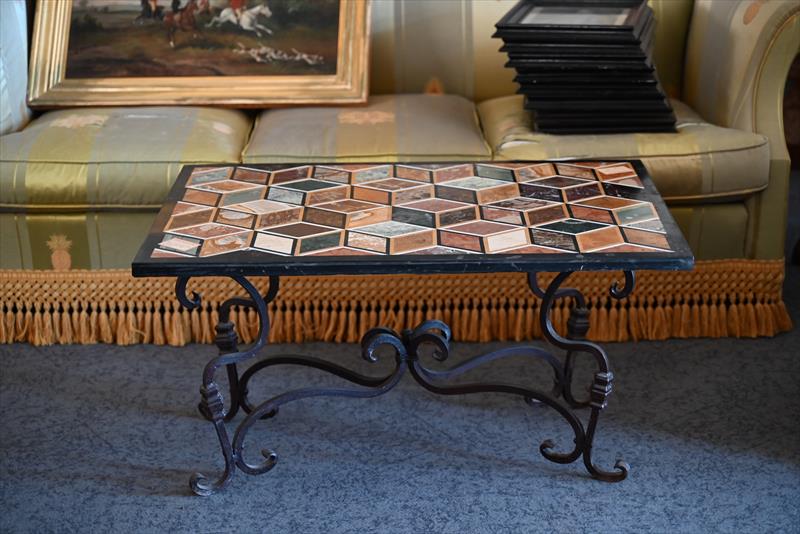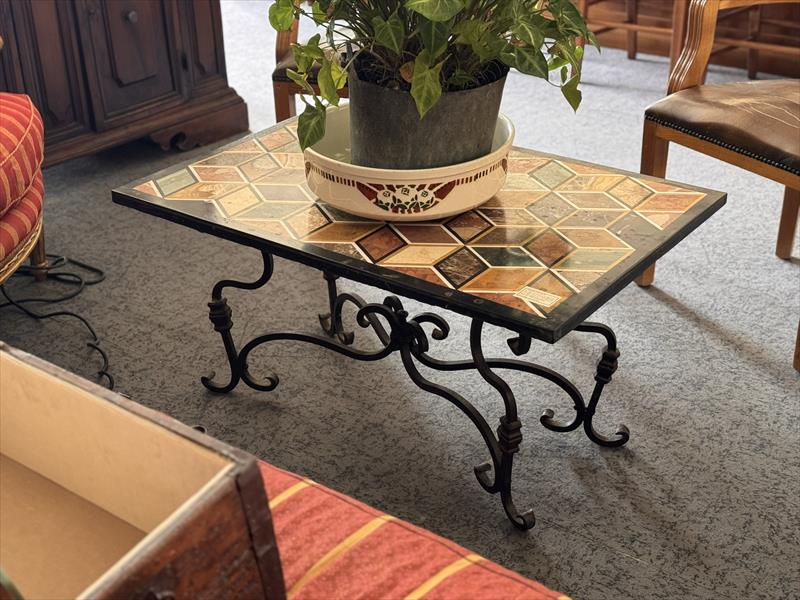Table composed of a finely inlaid polychrome marble top, supported by a hand-forged wrought iron base.
The top, dating from the early 19th century, features a geometric composition with three-dimensional, perspective-enhancing patterns known as “impossible cubes” or trompe-l’œil. It is crafted from a selection of fine antique marbles — including Giallo di Siena, Verde Alpi, Rosso Verona, and Nero Portoro — chosen for their natural veining and rich chromatic variety.
A black marble border elegantly frames the composition.
The precision of the joints and the quality of the materials place this piece firmly within the great Italian tradition of stone inlay, which reached its peak in the grand ducal workshops of Florence.
The base, likely made at a later date, is hand-wrought from solid iron and shaped with scrolls and volutes, the result of skilled artisanal craftsmanship.
Originally intended for aristocratic or bourgeois interiors, the table combines decorative refinement with technical mastery. The inlay process required highly specialized labor and deep knowledge of stone properties, including hardness and response to polishing.
The pairing of marble and iron is characteristic of neoclassical creations, where understated elegance and ornamental detail reflect both geological substance and the art of stone cutting.
Ideal as a centrepiece in classic interiors or as an accent piece in eclectic or contemporary settings, it dialogues effortlessly with a range of decorative styles thanks to its strong visual presence.
Not suitable for outdoor use.
- Material: Wrought iron and inlaid marble
- Size: cm 91 x 60 x 48 h
- Condition: Restored
- Period: Early 19th
- Style: Neoclassical
- State: Excellent conditions





